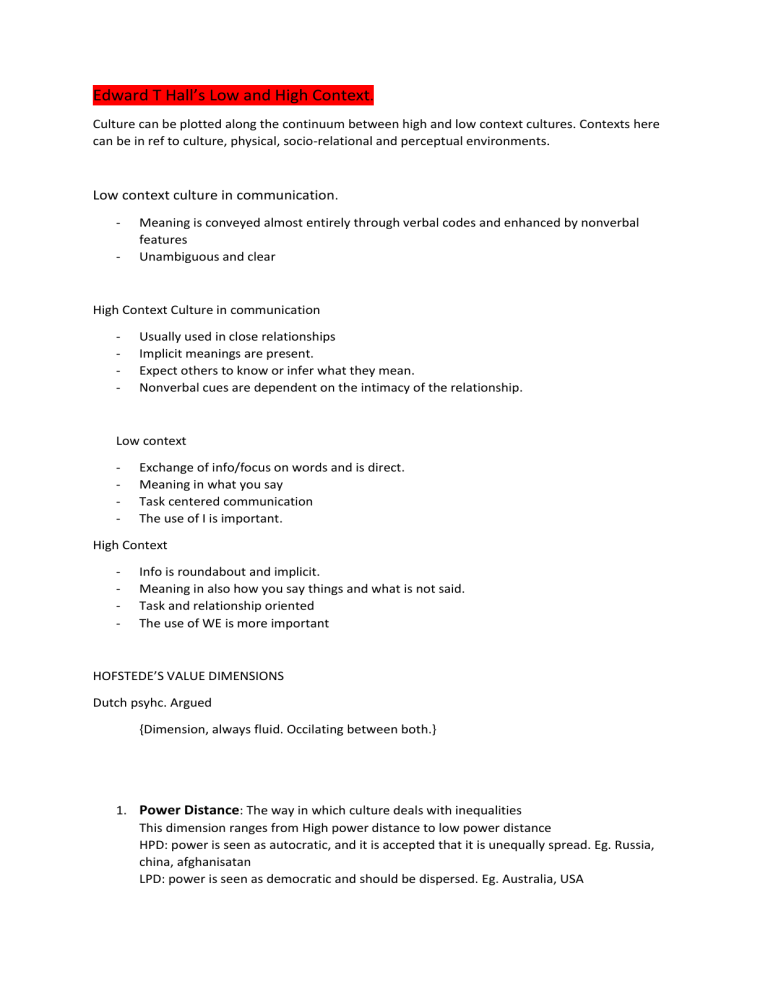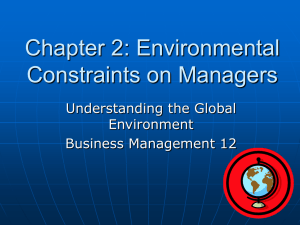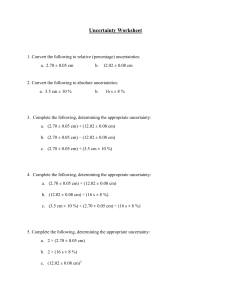
Edward T Hall’s Low and High Context.
Culture can be plotted along the continuum between high and low context cultures. Contexts here
can be in ref to culture, physical, socio-relational and perceptual environments.
Low context culture in communication.
-
Meaning is conveyed almost entirely through verbal codes and enhanced by nonverbal
features
Unambiguous and clear
High Context Culture in communication
-
Usually used in close relationships
Implicit meanings are present.
Expect others to know or infer what they mean.
Nonverbal cues are dependent on the intimacy of the relationship.
Low context
-
Exchange of info/focus on words and is direct.
Meaning in what you say
Task centered communication
The use of I is important.
High Context
-
Info is roundabout and implicit.
Meaning in also how you say things and what is not said.
Task and relationship oriented
The use of WE is more important
HOFSTEDE’S VALUE DIMENSIONS
Dutch psyhc. Argued
{Dimension, always fluid. Occilating between both.}
1. Power Distance: The way in which culture deals with inequalities
This dimension ranges from High power distance to low power distance
HPD: power is seen as autocratic, and it is accepted that it is unequally spread. Eg. Russia,
china, afghanisatan
LPD: power is seen as democratic and should be dispersed. Eg. Australia, USA
2. Femininity/masculinity
The drefee to which gender specific roles are valued and the degree to which cultures value
masculine traits.
Masculine: materialism, ambition, value achievement. Gender roles are specific.
Feminine: Support to the unfortunate, value life quality, maintain relationships. Gender roles
are more fluid.
3. Uncertainty avoidance
In this dimension we have to distinguish between low uncertainty avoidance and high
uncertainty avoidance
Low – not too worried about uncertainty, use less rules. The Netherlands.
High – terrified of uncertainty, many rules to maintain order. North Korea
4. Individualism/collectivism
Collectivist – people better themselves so that they may help their country.
Individualism – allows people to better themselves so that they can better themselves and
their own lives.
5. Long-term/Short-term orientations
Seacrh of virtue vs truth
Long-term – truth as imperative and are thus not concerned with workldy success but
instead a life pursuit of truth
S hort-term – one sees achieving success as mass production and consumption as imperative
Limitations
Not eveyvbidy in a given society holds the generalized dominant value
-
Relies on stereotyping.
Value systems can be unique
Orientation to values may be under intimidation or lack of access
Some valyes have not been considered or updated in light of history





